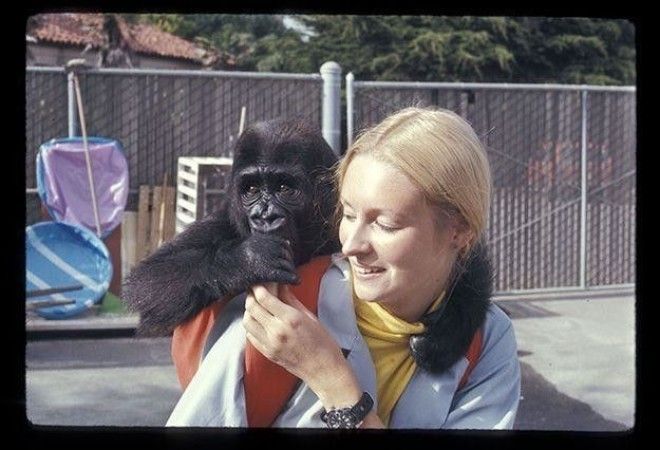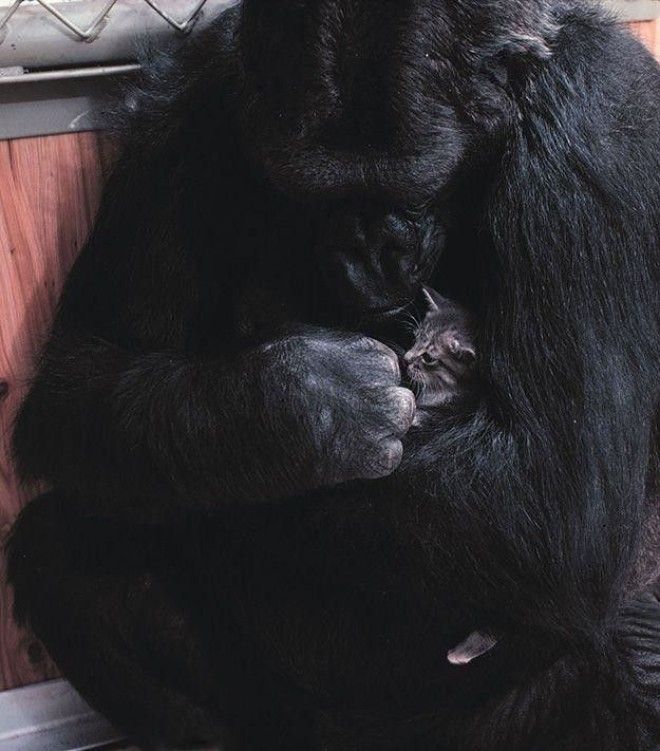Koko's been on the cover of National Geographic on more than one occasion. She's hung out with Leonardo DiCaprio and William Shatner.
The reason for her fame? She can communicate with humans.
She's been the subject of many news articles over the years, but a BBC crew has been given "unprecedented" access to film her for a month for their new programme — Koko: The Gorilla Who Talks to People.
Penny Paterson met Koko back in 1971. At the time she was studying for her PhD, and she started teaching sign language to the newborn Koko as part of an experiment to find out more about human-animal communication.



Flash forward 45 years and Koko now knows over 1,000 different signs. She's moved from San Francisco Zoo to a specially designed facility in Woodside. She has a team of carers, and Paterson visits her most days.
While filming for their documentary, a BBC film crew were invited to meet Koko and film her daily routines.
Director Jonny Taylor, who spent time in Koko's enclosure filming her, told Mashable that meeting her felt like meeting a celebrity.
"It's incredibly quiet and tranquil where she lives — you are ushered to Koko's porch with just a thin metal wire between you and her," he explained. "At first I couldn't see her, but then began to hear her purr and slowly move into view. Her size and presence took my breath away, and as she begins to want to engage you feel entirely privileged to be so close to such a magnificent animal."
The first time he approached her cage, Taylor was just planning to stay in the background and film unobtrusively — but he said Koko had other ideas.
"She came straight towards me, and towards the camera, smelling everything — trying to work out as much as she could," Taylor said. "Then she put her hand down to mine and led me into her enclosure — it felt like we were being invited in to a special world."

Although there are hours of footage of Koko performing sign language with Paterson, some areas of the scientific community are sceptical about her abilities.
Advertising
Professor Herbert Terrace, who was involved in a similar experiment with a chimp in the 1970s, criticised Project Koko publicly.
"I believe that Penny Paterson is an overzealous mother, who is very proud of her surrogate children and tends very much to project meanings onto those children," says Terrace in archived footage used in the documentary. "And that may not be apparent to another observer."

Koko holds a camera and looks through the lens. This one made the cover of National Geographic in 1978.
Taylor, meanwhile — who spent a great deal of time with both Koko and Paterson while filming the documentary — told Mashable it's difficult to know the extent to which Koko can communicate with humans.
"As one of our contributors say in the film, there is a yawning gap between what you can see and what you can prove," said Taylor. "Koko certainly has a rudimentary vocabulary which she can use to convey what she wants and needs — how much she can convey what she thinks and feels is far more difficult to ascertain.
"She and Penny have such a long and intimate relationship that Penny often has to interpret Koko for other people — this carries obvious
challenges.
"What's for sure is that when you look into Koko's eyes and witness her attempting to communicate with you, it completely changes the way you think about other apes."

